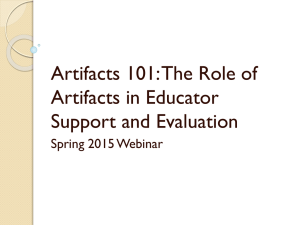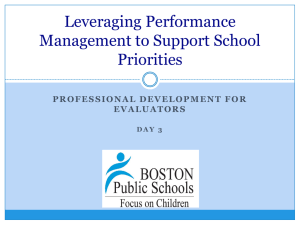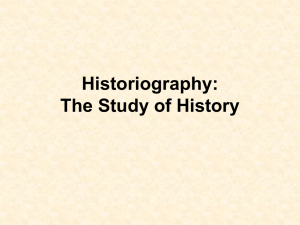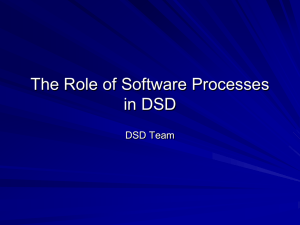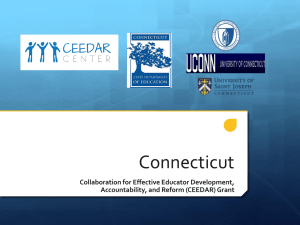Collecting Artifacts Showcasing Your Best Work!
advertisement
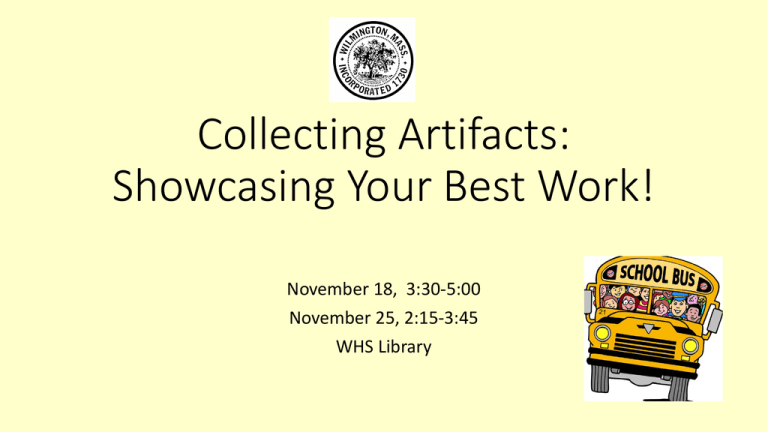
Collecting Artifacts: Showcasing Your Best Work! November 18, 3:30-5:00 November 25, 2:15-3:45 WHS Library Implementing your Educator Plan Sources of Evidence for Summative Ratings Three categories of evidence must be collected for each educator: 1. Multiple measures of student learning, growth, and achievement 2. Judgments based on observations and artifacts of professional practice 3. Additional evidence relevant to standards o This includes evidence collected by the educator and shared with the evaluator relating to fulfilling Performance Standards (rubric) What does this look like? Products of Practice Related to Standards Multiple Measures of Student Learning Other Evidence Related to Standards • Student work (quizzes, homework, presentations, etc.) • Student and staff feedback (2013–14 school year) Artifacts • Teacher-developed unit assessments • Grade-level meeting notes • Parent/teacher communication log • PLC meeting notes Observations • Notes/feedback from short, frequent observations (inside/outside classrooms) • Notes and feedback from announced observations • Portfolios • Performance assessments (including arts, vocational, health and wellness) • Interim assessments • State or district assessments What is an artifact? Products of an educator’s work that demonstrate knowledge and skills of the educator. Artifacts should never be documents manufactured for the evaluation. This definition of artifact comes from state regulations, 603 CMR 35.02. Importance of Strategically Collecting Artifacts Artifacts should be a sample that demonstrates educator performance and impact: • Evidence should be clearly tied to: • educator goals • Standards/Indicators Number of artifacts to collect varies by educator – Recommended 3 per Standards/Indicator Artifacts can provide evidence of more than one Standard or Indicator Examples of evidence 1-A-4-- Lesson Plans 2-A-1--Beginning and end of year writing prompt to assess student writing growth. 3-B-2--Parent newsletters sent home each month to update parents on curriculum, upcoming important dates, and classroom needs. 4-A-2--IPDP which outlines personal classroom instruction goals as well as district and school goals. Observations- are also evidence Artifacts also generated as you work toward your goals How many artifacts do I need? 3 for each Standard/Indicator for this evaluation cycle Some artifacts can be used for multiple standards/indicators 9-12 total How can I collect and manage all my artifacts? Strategies for Collecting Artifacts • Identify common artifacts that all or most educators will be expected to collect. • Share examples with co-workers • Remember to collect artifacts that provide evidence relevant to all 4 Standards, not just your 2 goals. Artifact Cover Page Running Record of Evidence Form Set Yourself and Your School Up for Success • The more concrete the Educator Plan, the easier it is to identify and collect artifacts. • Share examples of high-quality, valuable evidence during common planning time, team meetings, department meetings, or staff meetings • Select example artifacts that provide evidence of more than one Standard or Indicator where possible. • Identify common artifacts that all or most educators will be expected to collect (unit assessments, parent-teacher logs, etc.). Organize Adopt a process for organizing artifacts and observation notes by Standard or Indicator and/or goals: • Paper-based, e-mail-driven, or online “cloud-based” system Calendar: • Review actions in Educator Plans. Let your evaluator know if you need additional supports and resources. • Identify key points of contact throughout the year (observations and feedback, formative assessment conferences, and summative evaluations). What types of artifacts showcase my work? Work in pairs or groups of 3 to: • Brainstorm artifacts that might be common to all educators • Brainstorm artifacts that might demonstrate the Standards/Indicators you have selected to work on this year • Discuss which artifacts might be the strongest pieces of evidence of your work Next Steps in the Process Educator responsibilities: • Identifying, collecting, and organizing artifacts/evidence related to goal progress • Documenting action steps completed • Collecting and submitting common artifacts • Collecting and submitting evidence related to Standards Evaluator responsibilities: • Making resources and supports available • Identifying common artifacts/evidence • Observing practice and providing regular and specific feedback on performance • Monitoring progress—including midpoint check-ins • Organizing and analyzing evidence over time

